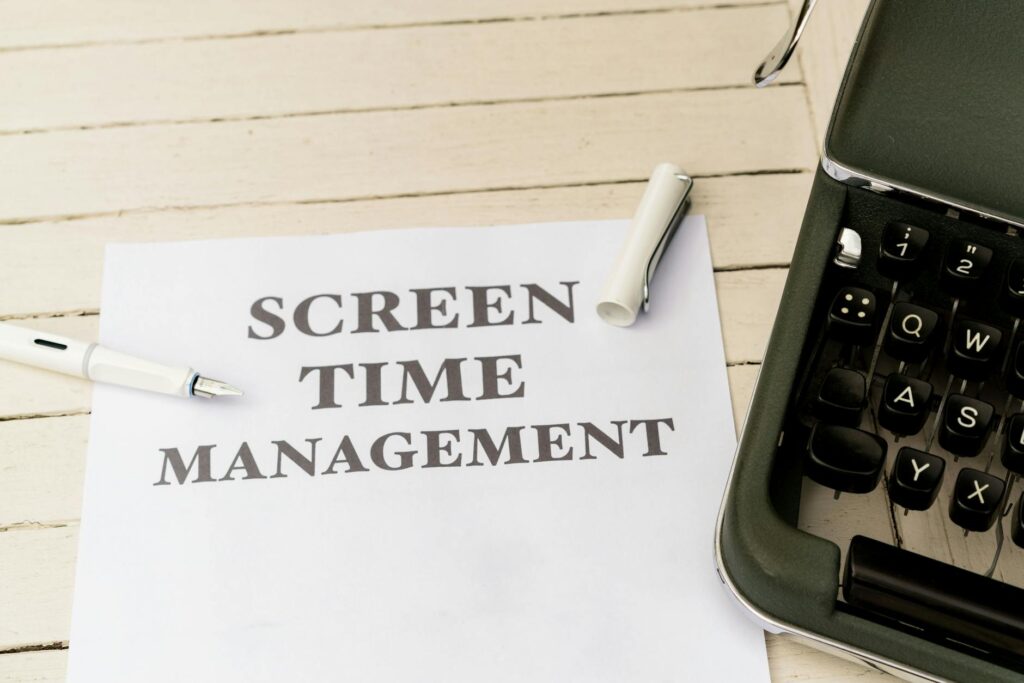What is balanced screen time?

What is balanced screen time?
In today’s digital world, where screens dominate our lives, the concept of balanced screen time has become increasingly important. With the rise of smartphones, tablets, and computers, the lines between work and leisure have blurred, leading many to question how much screen time is too much. This blog post will explore what balanced screen time means, its impact on our health, and practical strategies to achieve it.
Understanding Balanced Screen Time
Balanced screen time refers to the mindful and intentional use of screens, allowing for both productivity and leisure without compromising physical or mental health. It emphasizes a healthy relationship with digital devices, recognizing that while technology can enhance our lives, excessive use can lead to negative outcomes.
The Impact of Excessive Screen Time
Excessive screen time can significantly affect our physical and mental health. Research indicates that too much screen exposure is linked to various issues, including:
-
Physical Health Problems: Prolonged screen time often leads to sedentary behavior, which can result in obesity, chronic neck and back pain, and issues with eyesight. According to Nexus Health Systems, excessive screen exposure can increase stress and anxiety, disrupt sleep, and impact overall well-being.
-
Mental Health Concerns: Studies have shown that too much time spent on screens can contribute to feelings of isolation and anxiety, particularly among children and teens. As noted in the article from Health Matters, excessive screen use can inhibit a child’s ability to engage with everyday activities, affecting their social skills and emotional development.
Benefits of Balanced Screen Time
On the flip side, maintaining balanced screen time can lead to numerous benefits:
-
Improved Productivity: When screen time is managed, people often find they can focus better and accomplish tasks more efficiently. This is especially crucial for those working from home or studying online.
-
Enhanced Mental Well-Being: Limiting screen exposure can help alleviate feelings of stress and anxiety. Engaging in off-screen activities, such as exercise, reading, or spending time with loved ones, can lead to improved mood and overall mental health.
Strategies for Achieving Balanced Screen Time
Achieving balanced screen time requires intentional effort and practical strategies. Here are some tips to help you achieve this balance:
Setting Screen Time Limits
One of the most effective ways to manage screen time is to establish clear limits. Consider the following:
-
Designate Screen-Free Times: Set specific periods during the day when screens are off-limits, such as during meals or before bedtime. This will help foster a healthier relationship with technology.
-
Use Time Management Techniques: Implement techniques like the Pomodoro Technique, where you work for a set time (usually 25 minutes) followed by a short break. This encourages productivity while ensuring you step away from screens regularly.
Incorporating Breaks and Physical Activity
Incorporating regular breaks and physical activity into your routine is essential for combatting sedentary behavior. Here are some practical methods:
-
Schedule Breaks: During work or study sessions, set a timer to remind yourself to take short breaks. Use these moments to stretch, walk around, or do a quick workout.
-
Engage in Outdoor Activities: Make a conscious effort to spend time outdoors. Activities like walking, jogging, or playing sports can recharge your mental batteries while reducing screen time.

Photo by Markus Winkler
Tools and Resources for Managing Screen Time
Several tools and resources are available to help monitor and manage screen time effectively. Utilizing these can make the process easier.
Apps for Screen Time Monitoring
-
Qustodio: This app helps track screen time across various devices, allowing you to set limits and monitor your usage. It’s a great tool for parents wanting to manage their children’s screen time too.
-
Moment: This app measures how much you use your phone and encourages you to reduce screen time by setting daily limits.
-
Forest: This unique app encourages you to stay focused by growing virtual trees while you avoid using your phone. If you exit the app, your tree dies!
Tips from Experts
Psychologists and productivity experts often emphasize the importance of balance. According to the article from 4C for Children, it’s vital to establish a routine that includes both screen time and off-screen activities. They suggest that being selective about the content consumed and engaging in discussions about screen use can also enhance the experience.
Conclusion: Embracing Balanced Screen Time
In conclusion, embracing balanced screen time is essential for maintaining our health and well-being in a technology-driven world. By understanding the impacts of excessive screen time, recognizing its benefits, and implementing strategies to achieve balance, we can improve our productivity and mental health.
Start small—set limits, incorporate breaks, and utilize helpful tools. With these strategies, you can create a healthier relationship with technology that enriches your life rather than detracts from it. So, let’s embrace balanced screen time today for a more fulfilling digital experience!